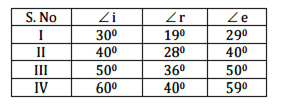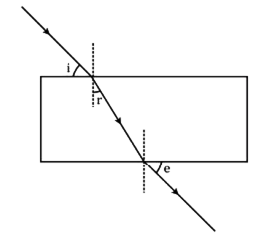 Multiple Choice Questions
Multiple Choice QuestionsA student has to focus his compound microscope to observe a prepared slide
showing different stages of binary fission in Amoeba. The steps he is likely to follow are listed below in a haphazard manner:
I. Adjust the diaphragm and the mirror of the microscope so that sufficient light
may enter to illuminate the slide.
II. Fix the slide on the stage carefully.
III. Adjust the microscope to high power and focus.
IV. Adjust the microscope to low power and focus.
The correct sequence of the above steps to observe the slide under the microscope
is
I, II, IV, III
II, I, IV, III
II, IV, I, III
II, IV, I, III
B.
II, I, IV, III
When you study a slide showing different stages of budding in yeast, you observe the following stages:
I. The bud may get separated from the parent body and develop into a new
individual.
II. The body of the bud develops and gives rise to another baby bud.
III. A bud comes out in any direction from the body of the parent cell.
IV. Thus they may form a colony.
The proper sequence of the above stages is
II, I, III, IV
II, III, I, IV
III, II, l, IV
III, II, l, IV
A student is using a convex lens of focal length 10 cm to study the image formation by a convex lens for the various positions of the object. In one of his observations, he may observe that when the object is placed at a distance of 20 cm from the lens, its image is formed at (select the correct option)
20 cm on the other side of the lens and is of the same size, real and erect.
40 cm on the other side of the lens and is magnified, real and inverted.
20 cm on the other side of the lens and is of the same size, real and inverted.
20 cm on the other side of the lens and is of the same size, real and inverted.
Which of the following pairs of two vegetables represent the correct homologous
structures?
Sweet potato and potato
Sweet potato and tomato
Carrot and potato
Carrot and potato
Study the following statements:
I. Wings of birds and wings of bats are homologous organs.
II. Wings of birds and wings of insects are modified forelimbs.
III. Wings of birds and wings of insects are analogous organs.
IV. Wings of birds and forelimbs of horse are homologous organs.
I and II
II and Ill
III and IV
III and IV
In the following diagram showing the structure of embryo of a dicot seed, what are the parts marked I, II and III sequentially?
Plumule, Cotyledon, Radicle
Plumule, Radicle, Cotyledon
Cotyledon, Plumule, Radicle
Cotyledon, Plumule, Radicle
After tracing the path of a ray of light passing through a rectangular glass slab for four different values of the angle of incidence, a student reported his observations in tabular form as given below:
The best observation is:
I
II
III
III
A student traces the path of a ray of light passing through a rectangular glass slab and marks the angle of incidence i, angle of refraction r and angle of emergence e, as shown:
The correct marked angles are:




 Short Answer Type
Short Answer TypeThe atomic numbers of three elements A, B and C are 12, 18 and 20 respectively. State, giving a reason, which two elements will show similar properties.
Study the following table in which positions of six elements A, B, C, D, E and F are shown as they are in the modern periodic table:
On the basis of the above table, answer the following questions:
(i) Name the element which forms only covalent compounds.
(ii) Name the element which is a metal with valency three.
(iii) Name the element which is a non-metal with valency three.
(iv) Out of D and E, which is bigger in size and why?
(v) Write the common name for the family to which the elements C and F belong.
